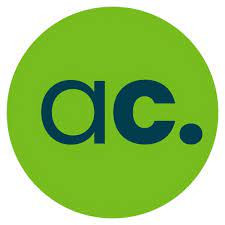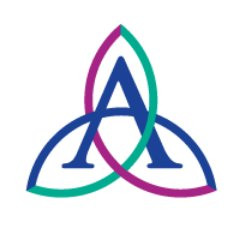Summary Description:
To plan and deliver nursing care to patients/ residents requiring long-term or rehabilitative care.
Essential Duties and Responsibilities:
1. Works using the guidelines established from the Nurse Practice Act, facility policies and procedures, and nursing judgement.
2. Assesses, plans and evaluates nursing care delivered to patients/residents requiring long-term or rehabilitation care.
3. Delivers nursing care to patients/residents requiring long-term or rehabilitative care.
4. Implements the patient/residents plan of care and evaluates the patient/resident response
5. Directs and supervise care given by other nursing personnel.
6. Provides input in the formulation and evaluation of standards of care.
7. Maintains knowledge of necessary documentation requirements.
8. Maintains knowledge of equipment set-up, maintenance and use, i.e. monitors, infusion devices, drain devices, etc.
9. Maintains confidentiality and patient/resident rights, regarding all patient/ resident/ personnel information.
10. Provides patient/resident/family/caregiver education as directed.
11. Conducts self in a professional manner in compliance with unit and facility policies.
12. Works rotating shifts, holidays and weekends as scheduled.
13. Initiates emergency support measures (i.e., CPR, protects patients/residents from injury)
14. Assessment
A. Admission and routine resident observations/transfer notes are complete and accurately reflect the patient=s/resident’s status.
B. Documentation of observations is complete and reflects knowledge of unit documentation policies and procedures.
C. Nursing history is present in the medical record for all patients/residents
D. Assessment identifies changes in the patient=s/resident’s physical or psychological condition (i.e., changes in lab data, vital signs, mental status).
15. Planning of Care
A. Nursing care plans are initiated/reviewed/individualized on assigned patients/residents monthly and PRN.
1. Pertinent nursing problems are identified.
2. Goals are stated.
3. Appropriate nursing orders are formulated.
16. Evaluation of Care
A. The effectiveness of nursing interventions, medications, etc., is evaluated and documented in the progress notes.
B. Care Plans:
1. Evaluation of care plan is noted monthly or as indicated.
2. The care plan is revised as indicated by the patient’s/residents status.
17. General Patients/Resident Care
A. Patient/Resident is approached in a kind, gentle and friendly manner. Respect for the patients/resident dignity and privacy is consistently provided
B. Interventions are performed in a timely manner. Explanations for delays in answers/responses are provided.
C. Independence by the patient/resident in activities or daily living is encourages to the extent possible.
D. Treatments are completed as indicated.
E. Safety concerns are identified and appropriate actions are taken to maintain a safe environment.
1. Side-rails and height of bed are adjusted
2. Patient/residents call light and equipment is within reach
3. Restraints, when used are maintained properly.
4. Rooms are neat and orderly.
F. Patient/resident identification and allergy bands (if applicable)are present.
G. Functional assignments are completed.
H. Emergency situation are recognized and appropriate action is instituted.
I. All emergency equipment can be readily located and operated (emergency oxygen supply, drug box, fire extinguisher, etc.)
18. Patient/Resident Education/Discharge Planning
A. The patient/resident and family are involved in the planning of care and treatment (documented on the plan of care.)
B. Patient/resident and/or family are provided with information related to all intervention and activities as indicated.
C. Discharge/death summaries are complete and accurate.
D. Transfer forms are complete and accurate.
E. Active participation in patient/resident care management is evident.
19. Adherence to Facility Procedures
A. Facility procedure manuals or reference materials are utilized as needed.
B. Procedures are performed according to method outlined in procedure manual.
C. Body substance precautions and other appropriate infection control practice are utilized with all nursing interventions.
D. Safety guidelines established by the facility (i.e., proper needle disposal), are followed.
20. Documentation
A. The patients/residents full name and room number are present on the chart forms. Allergies are noted on the chart cover.
B. Only approved abbreviations are utilized.
C. TPR graphic is completed properly and timely.
D. I&O summaries are recorded and added correctly.
E. Blood pressure graphic is competed accurately and timely.
F. Progress notes are timed, dated and signed with full signature and title.
G. Unit flow-sheets are completed properly (i.e., wound care records, treatment records, IV therapy record, etc.).
21. Medication Administrations/ Parenteral Therapy Record
A. Dates that medication are started or discontinued are documented.
B. Medication are charted correctly with name, dose, route, site, time and initials of nurse
Administering.
C. Pulse and BP are obtained and recorded with appropriate.
D. Medications not given are circled, reason noted and physician notified if applicable,
E. Appropriate notes are written for medication not given and actions taken.
F. Name and title of nurse administering medication are documented.
G. Patient/residents medication records in labeled with full name, room number, date and allergies.
H. The procedure for administration and counting of narcotics is followed.
I. All parenteral fluids including additives are charted with time and date started, time infusion completed, site of infusion and signature of nurse.
J. All parenteral fluids are administered according to the ordered infusion rate.
K. Parenteral intake is accurately recorded ion the unit flow sheet or I&O record.
L. IV sites are monitored and catheters changed according to unit policy.
M. IV bags and tubing are changed according to unit policy
N. Appropriate actions are taken related to identified IV infusions problems (infiltration, phlebitis, poor infusion, etc.) policy.
22. Coordination of Care
A. Tests are scheduled and preps are completed as indicated.
B. Co-workers are informed of changes in patient/resident condition or of any other
Changes occurring on the unit.
C. information is relayed to the member of the health care team (i.e., physicians, respiratory therapy, physical therapy, social services, etc.,).
D. Unit activities are coordinated (i.e. changing patients/residents room for admissions
Coordination transfer/discharge forms, etc.)
23. Leadership
A. Equitable care assignments are made prior to shift that are appropriate to patient/resident’s needs.
B. Staffing needs are communicated to the nursing supervisors.
C. Assistance, direction and education are provided to unit personnel and families.
D. Problems are identified, data are gathered, solutions are suggested and communication regarding the problem is appropriate.
E. Transcriptions of all orders is checked.
F. All work areas are neat and clean
24. Communication
A. Change of shift report is complete, accurate and concise.
B. Incident reports are completed accurately and in a timely manner.
C. Staff meeting are attended, if on duty, or minutes read and initialed if not on duty.
25. Professionalism
A. Decisions are made that reflect knowledge and good judgment and demonstrate and awareness of patient/resident/family/physician needs.
B. Awareness of own limitations is evident and assistance is sought when necessary.
C. Dress code is adhered to
D. Committee meeting (if assigned) are attended. Reports related to the committee are given during staff meetings.
E. Responsibility is taken for own professional growth. All mandatory and other in-service’s are attendee annually.
F. Organizational ability and time management is demonstrated.
G. Confidentiality of patient/resident is respected at all times (i.e, when answering telephone and/or speaking to co-workers)
H. Professional behavior is demonstrated.
26. Human Relations
A. A positive working relationship with patient/residents, visitors and facility staff is demonstrated.
B. Authority is acknowledged and response to the direction of supervisors is appropriate.
C. Time is spent with residents rather than personnel.
D. Co-workers are readily assisted as needed.
27. Cost Awareness
A. Supplies are used appropriately.
B. Charge stickers (or charge system) are utilized appropriately.
C. Minimal supplies are stored in resident room.
D. Discharged medications are returned to the pharmacy or destroyed in a timely manner.
E. Floor-stock medications are charged and re-stocked
28. Participates in the identification of staff educational needs.
29. Serves as a preceptor, as delegated, for new staff
30. Maintains patient/resident care supplies, equipment and environment.
31. Participates in the development of unit objectives
32. Participates in the quality assessment and improvement process and activities.
Other Duties:
1. As this job description is no intended to be all-inclusive, the employee will be expected to perform other duties as assigned.
Standard Responsibilities:
1. Supports the facility
2. is knowledgeable of patient/residents rights and promotes an atmosphere which allows for the privacy, dignity and well-being of all residents in a safe, secure environment.
3. Supports, cooperates with, and implements specific procedure and programs for:
A. Safety, including precautions and safe work proactive, established fire/safety/disaster pans, risk management, and security, report and / or correct unsafe working conditions, equipment repair and maintenance needs.
B. Confidentiality and privacy of all data, including patient/resident, employee and operation data.
C. Compliance with all regulatory requirements.
D. Compliance with and enforcement of current law and policy to provide a work environment free from harassment and all illegal and discriminatory behavior.
4. Supports and participates in common teamwork:
A. Cooperates and works together with all co-workers; plan and complete job duties with minimal supervisory direction, including appropriate judgement.
B. Uses tactful, appropriate communication in sensitive and emotional situations.
C. Reports complaints, problems and concerns regarding co-workers, management or residents in accordance with facility policy.
D. Promotes positive public relation with patients, residents, family member and guests.
E. Completes requirements for in-service training, acceptable attendance, uniform and dress code including personal hygiene, and other work duties as assigned.
5. Agrees to company with code of conduct.
Employment Standards:
Education: Must be a graduate of basic education program in professional nursing
Experience: A minimum of one year medical/surgical nursing experience in an acute care (hospital) setting or long-term care or acute care is preferred. Critical care experience is preferred.
License/Other: Must possess a current RN License in the State(s) of practice. Must have a reliable source of transportation. Must have a valid driver’s license and automobile insurance.
Working Conditions:
Works in office areas as well as throughout the facility. Must be able to move about intermittently during working hours including standing, lifting, bending stooping, twisting, pushing and pulling. Must be able to read, write and speak the English language. Must be able to transfer resident and assist in emergency evaluations. Interacts with resident, family members, staff, visitors, government agencies/personnel, etc., under all conditions/circumstances. Must be able to relate and work with the disabled, ill, elderly, emotionally upset and at times, hostile people within the facility. May be involved in community/civic health matters/ projects. May be exposed to infectious waste, disease, conditions, etc., including exposure to the AIDS and hepatitis B Viruses. Must be able to effectively communicate with management staff, medical staff, nursing staff, and other unit supervisors,. Maintains a liaison with residents, their families, support staff, etc. to assure that the residents’ needs continually met.









